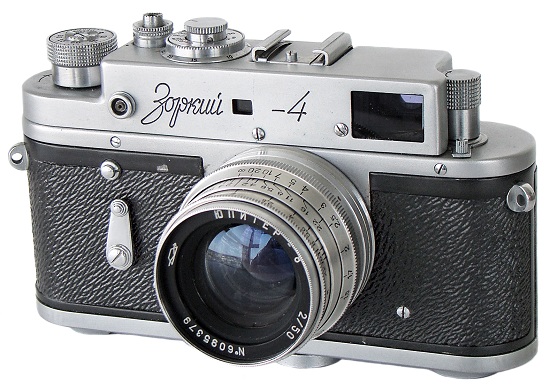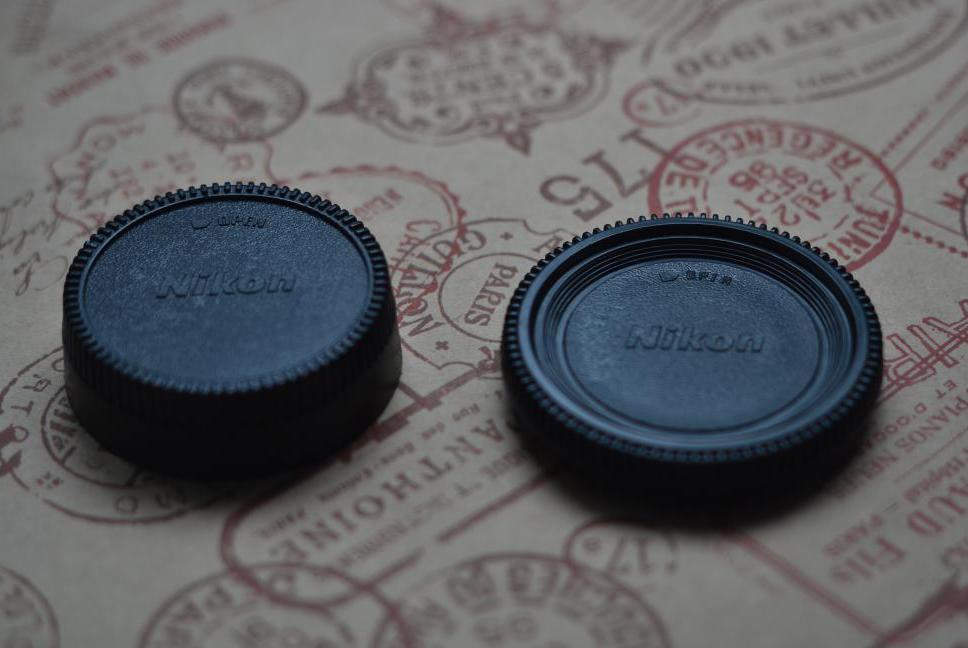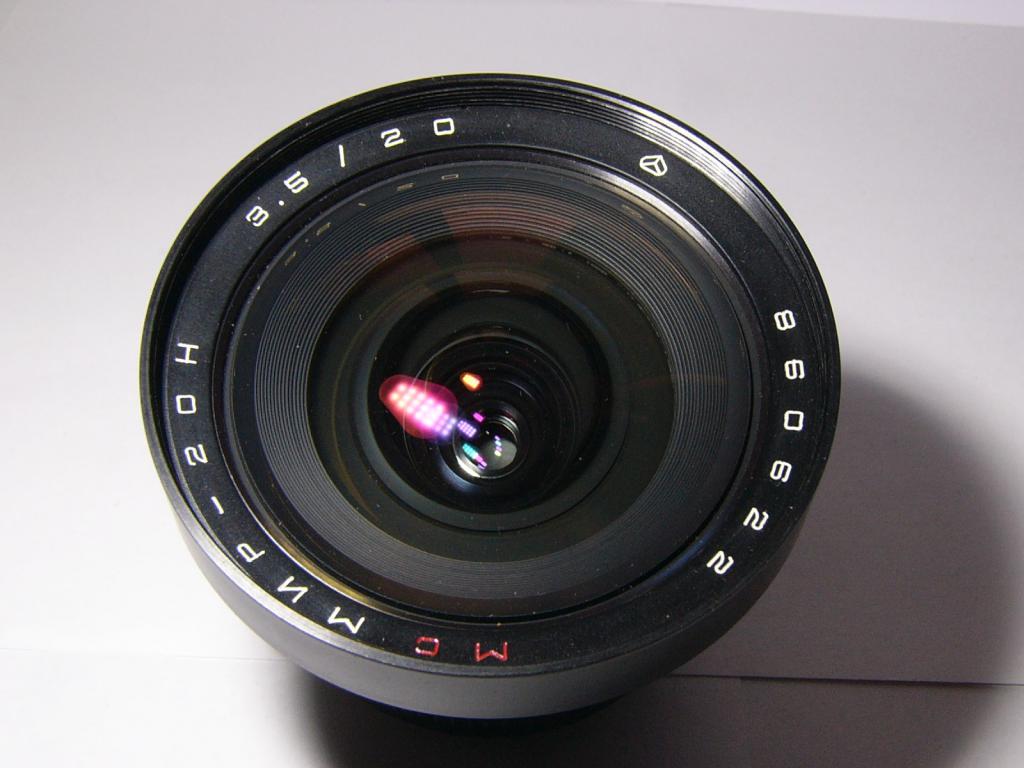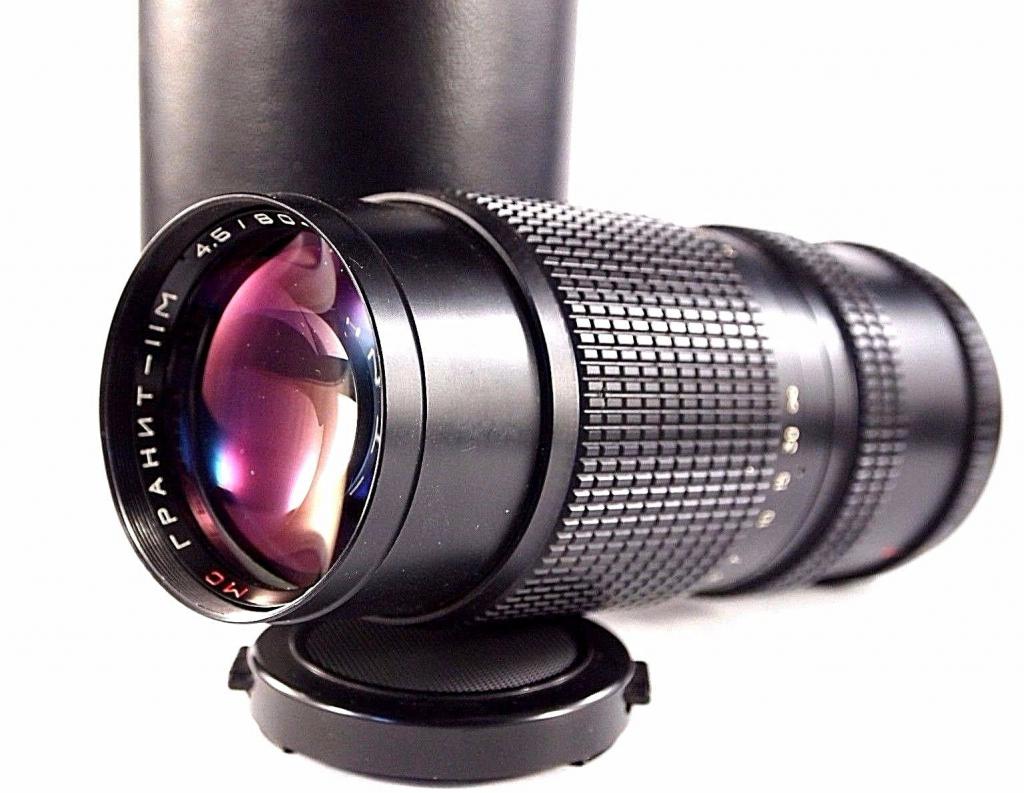With the advent of digital cameras, anyone can take an infinite number of their own shots from any angle. However, pretty soon fans of capturing beautiful moments realized that for good work (except for bare enthusiasm) they need a decent camera with decent optics, and not a soap dish with a plastic lens. Therefore, gradually came a fashion for the purchase of professional or semi-professional devices. But it turned out that the lenses on them cost a lot of money, which most amateur enthusiasts simply do not have. An alternative was found. It was the old Soviet lenses, which, it turned out, can still be shot on cool modern cameras. Let's look at the best of them, which today you can safely use when going out on a photo hunt.
A little bit about the history of the development of Soviet photographic equipment
Before you consider the best Soviet lenses, it is worth a little study of their history. With the advent of the USSR, in this country they began to try to produce their own unique equipment, among which were cameras. However, as was the case in other areas, in most cases, Soviet lenses and devices for them were copied from successful foreign counterparts. Sad but true. The first camera models of pre-war production were equipped with integrated optics. Only in the thirties came the fashion for removable lenses.
One of the very first cameras with such optics was the legendary FED 1934 with the lens of the same name. This design was completely “borrowed” from the German small-format rangefinder camera Leica II.
The next significant achievement in this area was the dual-lens Komsomolets device, which was produced from 1946 to 1951 (a copy of the German Voigtländer Brilliant). Unlike the FED, the optics of this device were not removable - these are T-21 f 6.3 / 80 mm Triplet lenses. But the “Moscow-2” (Super Ikonta C 531/2 from Zeiss Ikon) already had a detachable lens “Industar-23” 4.5 / 110 mm.
Over the next couple of years, there were no special advances in the creation of Soviet optics and cameras, but the well-known models of world brands or earlier copies were only copied. By the way, in this way Komsomolets became the Amateur, and the FED became the Zorkim.
In 1951-1956, the Zorkiy-3 small format rangefinder camera (Leica ІІІ, for which the Jupiter-8 2/50 and Jupiter-17 2/50 detachable lenses were developed) appeared on the market. In parallel, in 1952-1956. was invented and produced a small format single-lens mirror “Zenith”, created on the basis of the rangefinder “Vigilant”, but much more advanced, as at that time. For this, without a doubt, achievements were used by such Soviet lenses as Industar-22 3.5 / 50 and Industar-50 3.5 / 50.
The next success in this area was the modernized conversion of the Zorky-3C into the Zorky-4 apparatus (1956-1973). At that time, it was the most popular model, which for many years remained the best in its series. As a rule, "Zorkiy-4" was equipped with such Soviet mirror lenses as "Jupiter-8" 2/50 and "Industar-50" 3.5 / 50. There is also evidence that a separate series of devices was equipped with a Jupiter-17 2/50 lens. Most likely, these were those copies that were produced in the year of the celebration of the fiftieth anniversary of the establishment of Soviet power.

In the post-war period, a lot of new models began to be produced in the country on the basis of old or borrowed from the decaying West. In fairness, it should be noted that domestic minds tried to bring their own ideas into such devices. However, management often hindered these endeavors. The main reason was, of course, in money. After all, developing something yourself is longer and more expensive than stealing a ready-made thought.
For all of us, the main thing is the fact that already in the second half of the fifties, most of the new models in the Union were equipped with interchangeable optics. And this means that several enterprises specializing in the production of photo lenses have appeared in the country. So this period was a turning point in the history of Soviet photo optics, since now it has gained some independence.
The main line of lenses in the USSR
Although photo optics have been produced over the next few years, only a few brands have gained the most popularity.
- "Jupiter". This type of lens was originally copied from the German CZJSonnar back in 1949. Over the years of the USSR, about two hundred models of such optics were developed. Moreover, their purpose was very different. High-speed Soviet Jupiter lenses, as a rule, were copied from the most successful CZJ Sonnar models and were suitable for most cameras such as Kiev, Salute, Narcissus, Leningrad, Zorkiy, etc. It is worth noting that the mounts (thread size) of such optics were different, as were the manufacturers.
- Another type of Soviet lenses that is familiar to almost everyone is Industar (the name is from industrialization + fashionable European suffix -ar). In total, in this line there were a little more than a hundred models that were produced at completely different enterprises of the USSR. The main distinguishing feature of such devices was their optical design, consisting of four lenses, two of which were glued together. Most of these lenses were placed on cameras of the Zenit, FED, Neva, Sport, Moscow, Zarya, Salut and other brands .
- Helios was also known throughout the country. The optics of this brand were placed not only on cameras, but also on movie cameras, used for aerial photography, etc. Most of the Helios consisted of six lenses in four groups, although there were also lenses with seven lenses. A little more than one hundred and twenty models were released in this line, which could be placed on the same cameras as Industar, since the type of mount for this optics was identical.

- The line of Soviet wide-angle Mir lenses was slightly less numerous. They were released more than seventy models. Similar devices could be placed on the same cameras as the above. Although there were exceptions to this rule. For example, Mir 1-A had an interchangeable adapter tail, which allowed it to be installed on devices with other types of threads.
- But “Kaleinar” is a series of rather rare lenses for Soviet cameras, which was small in number. Their optical system consisted of four lenses in four components. This miracle was produced at the Kiev Arsenal plant, and only two models of the line went on sale: Kaleinar-3 and Kaleinar-5. Due to the special types of bayonet mounts ("B" and "B"), this optics could only be installed on the Kiev-6S, Kiev-60 (B) devices, as well as on Salyut and Salyut-S "and" Kiev-88 "(" B ").
- We can’t forget about the Tair range of telephoto lenses. Such optics were not placed on finished devices, but were sold separately as interchangeable small format single-lens reflex cameras. An interesting feature of them can be considered that the models with the letter "A" in the name came in a set of adapters. Thus, Tair could be put on most cameras with different types of mounts, which led to its prevalence. The remaining types of such Soviet SLR lenses had a clear mount size: either "B" or "C".
- Another small line of USSR photo optics is Rubin. So called a series with variable focal length. The device was copied from Voigtländer Zoomar. As for the mount, most models had a rare “Ts” or “Automatic” mount, so they could only be placed on a limited number of cameras: Zenit-4, Zenit-5, Zenit-6 (Ts), "Kiev-10" and "Kiev-15" ("Automatic").
- It is also worth highlighting such a family of lenses as the Zenith. Unlike all of the above, optics of this brand are produced in the Russian Federation to this day. The Zanitar in the lineup has both lenses with a normal focal length, and wide-angle, telephoto lenses and models with a variable focal length.
Can I use optics from old cameras on modern cameras?
Having dealt with the lines of the best Soviet lenses, you should find out which of them can be used today. Theoretically, almost everything, because most of the film cameras of the Soviet era are still in working condition. So you can put the film and shoot whatever you want. Moreover, some photo artists today, yearning for retro, lay down digital cameras and get their Soviet ancestors.
However, there are only a few such eccentric enthusiasts, but most photo enthusiasts are quite happy with good digital technology, on which, by the way, you can really use Soviet optics. But in order to connect this miracle, it is necessary to use special adapters, since the majority of photo optician mastodons have bayonets different from those on modern Nikon, Kenon, Olympus or Sony (the most popular brands of digital devices).
What adapters are used for old photo optics
Although there are many types of adapters for Soviet lenses today (thanks to the hardworking Chinese), most often you have to deal with three of them, each of which is designed for a specific type of mount:
- Adapter for optics with M39 thread.
- Bayonet N.
- Adapter to M42.
The latter is one of the most common. Therefore, it can be used to connect the predominant majority of Soviet lenses. M42 is perfect for almost all modern Nikon and Kenon models. In addition to the diameter of the mount, the adapters are still distinguished by their additional functions. So, the simplest of them are ordinary metal rings, which allow you to screw the optics to the camera.
More expensive models are usually equipped with anti-reflective glass, the main task of which (contrary to the assurances of many sellers) is to prevent dust and factory grease accumulated over the years from getting into the digital device. The coolest are adapters with chips. They allow you to at least slightly automate the work of retrooptics. Here, for each line of cameras, individual rings have been developed, adapted to the mechanics. However, the speed and maneuverability of their work is still inferior to modern counterparts.
You can purchase any of the adapters in any more or less serious photo equipment store or via the Internet. Also, many craftsmen make such accessories with their own hands. But this is too long and too laborious, while the simplest rings of the type M42 or M39 cost mere pennies.
How to connect vintage optics?
To connect Soviet lenses to Nikon, Kenon, Olympus, Sony or other modern devices, you need to do a number of simple steps:
- First of all, turn off the camera (and who would have thought that some might forget about this).
- Next, you need to screw the adapter to the optics, which must first be cleaned of dust, grease and other contaminants. By the way, for this it is better to use special rags or sets.
- Then the native optics are removed from the camera. As a rule, for this you need to press a button near the mount and unscrew the lens. In any case, you must first study the instructions (despite the fact that our national tradition prescribes the reading of this Talmud only in case of breakage).
- The last action is the very installation of the Soviet lens on the Nikon, Kenon, Sony, etc. To do this, you need to find the red or white dot on the adapter and, comparing it with a similar mark on the camera itself, screw in the optics . Now we turn on the device in the "M" mode and use the device.
Pros of using retro optics on modern cameras
As can be seen from the previous section, connecting Soviet photo optics to digital devices is a simple matter. In addition, the use of such equipment has several advantages:
- First of all, this is the price. So, Soviet lenses for Nikon and Canon are several times cheaper than their modern counterparts.
- In addition to cheapness, optics have excellent glass, which allows you to take very clear pictures that do not deform and stretch around the edges, as happens when working with plastic substitutes.
- For such devices, the lens system, as a rule, has been tested for years and allows you to achieve excellent results.
- Another advantage of using Soviet lenses for Canon, Nikon, Sony, etc. is their durability. Most of them are made of virtually indestructible metal. By the way, that's why they weigh twice as much as their modern versions.
- In addition, such optics are designed to work in manual mode, which means that the wheels and chassis are made as convenient and durable as possible.
Disadvantages of Soviet photo optics when used on modern cameras
However, the use of Soviet lenses for Canon, Nikon, Sony, etc., has drawbacks, and they are quite significant:
- First of all, this is the old age of technology. A good half of it is older than the photographers using it, or at least the same age. And this means that the possibility that it will be worn out and quickly fail (despite the vaunted Soviet quality) is very great.
- In addition, it is worth remembering that most lenses were designed for black and white shooting, which means that when working with color, they can give a faded picture. Although the possibilities of modern Photoshop are trivial.
- Another significant drawback is the workmanship. Recalling the history of the photo industry in the USSR, we see that the overwhelming majority of everything that was produced in this area was actually stolen from other countries. However, so that no one would notice, minimal cosmetic changes were often made. And based on the amount of marriage (which Indestructible was so famous for), we can conclude that some of the lenses were not manufactured according to GOST, which means that the quality of the photos will leave much to be desired. So, acquiring a used optics made in USSR, you can turn out to be exactly the darling of fate, who will get a defective copy.

- If the previous reasons concerned the state of the lenses, then it is worth listing the negative features of their work. First of all, it is that they can be photographed only in manual mode and not otherwise ("M"). Of course, rings with chips theoretically allow the Soviet miracle to connect to modern electronics and somehow interact with it, but it will still be significantly worse than using native optics. So, deciding to work with manual Soviet lenses, it is important to prepare for manual labor and the need to independently configure all the functions in the camera. On the other hand, most professionals even work with cool modern optics. Therefore, shooting with Soviet lenses can be an excellent school and a test of endurance for beginners. So it’s worth a try, especially since in case of failure you can always put back the native automated lens.
What categories is made in USSR made of optics
Having dealt with the history, advantages and disadvantages of retro optics, it is worth moving on to considering which Soviet lens is better to use and for what exactly. So, you can distribute photo optics in different categories, but it’s best to do it according to the focal length (this is the distance from the optical center of the lens to the matrix where the sharp image of the object is formed, measured in millimeters). Among such equipment, it is easiest to distinguish the most common three types:
- Wide-angle is an optics in which the focal length is shorter than normal. Due to this property, it is great for shooting landscapes.
- Portrait telephoto lenses are designed for close-up photography.
- Telephoto lenses are a type of telephoto lens whose design allows you to make the frame and the entire lens shorter than its focal length.
The best Soviet portrait lenses
In this category, the five most optics of the times of the USSR are considered the most-most:
- First of all, this is "Helios 44/2" with a focal length (f) of two. His device allows you to create in your pictures your favorite bokeh. In other words, the entire unsightly background is blurred by bizarre circles. However, in order to learn how to focus this miracle on what is needed, you will have to sweat a lot.
- Another Helios, which is considered one of the best in its category, is the 40-2. By the way, that is why it is still produced in Russia, although it is inferior to its Western counterparts. This equipment can create even brighter bokeh, since its focal length (f) is only 1.5. It is designed for portrait and street photography. "Helios 40-2" is able to create a three-dimensional and plastic picture, as well as provide a soft rendering of details without gaps and dips in the shadows.

- "Jupiter-37A" has a diaphragm of twelve petals. Like Helios, it perfectly blurs the background when the diaphragm is open. By the way, so that there is no blur on the finished image due to hand shake, it is best to shoot with this lens at shutter speeds of less than 1/200.
- A relative of the 37th Jupiter-9 has an even larger number of diaphragm blades — fifteen. Thanks to this, such optics creates bright and clear portraits. By the way, this copy is almost completely copied from Carl Zeiss Sonnar 85/2.
- And the last among the best portrait lenses of the Soviet era is Tair-11A. It was designed for group portraiture. He has even more aperture blades — twenty. Therefore, the bokeh in the blurry background of this device comes out the best among those listed.
It is worth noting that all the mentioned optics are perfectly suitable not only for photography, but also for video. So, many modern cameras are capable of operating in the camcorder mode, and the ability of these Soviet lenses to beautifully blur the background helps create an unusually romantic effect when shooting clips. By the way, along with all the mentioned optics, you can use macro rings, which will allow you to create excellent pictures of small parts.
Top wide angle lenses
There are not many examples of good equipment in this category. Perhaps because at one time it was much less in demand than portrait optics. So, consider the best Soviet wide-angle lenses:
- "Zenitar-N" is the so-called "fisheye", because its angle of view is almost 180 degrees.
- His relative - Zenitar MS - is still being produced. Despite the moral obsolescence, it is perfect for those who want to get their hands in portrait photography. However, for more serious work in the future, it is worth digging up and buying something more modern.
- But the old man "Mir-20M" can still take great photos. Most often it is used for shooting architectural works and landscapes. Its feature is high sharpness over the entire area of the frame.
Telephoto Lenses
As for telephoto lenses, their list is very short, since in the days of the USSR they were rare and very expensive:
- To this day, "Telezenitar-K" is considered the most famous and successful in this category. It just has an excellent aperture and a built-in hood (protection against glare). It belongs to those sharp Soviet lenses with which you can photograph landscapes and objects from afar. He also recommended himself well for shooting at various events, if the subject is at a great distance. The main disadvantage of such optics is the lack of an image stabilizer. Because of this, it is best to shoot with a tripod, as with manual shooting, the likelihood of jitter and blurry images is very high.

Also, the Granite-11 telephoto lens, which was produced in the Ukrainian SSR at Arsenal, proved to be quite good. He was one of the few Soviet zoom lenses. By the way, after the collapse of the USSR, the Arsenal plant continued to produce it, however, under a different name - MS ZOOM ARSAT. Granit-11, like Telezenitar-K, is capable of taking various pictures from a long distance. Moreover, when zooming, the length of the device does not increase, which is quite practical in operation. It also has a built-in hood. It is worth adding that today this telephoto lens is often used in photo studios as a portrait lens.